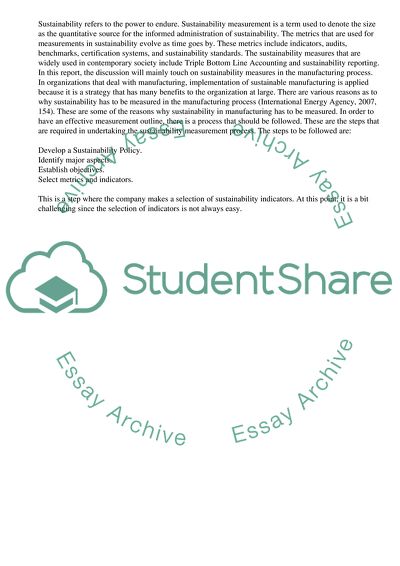Cite this document
(Sustainability in Manufacturing Term Paper Example | Topics and Well Written Essays - 3172 words, n.d.)
Sustainability in Manufacturing Term Paper Example | Topics and Well Written Essays - 3172 words. Retrieved from https://studentshare.org/management/1620796-measuring-sustainability-in-manufacturing-process
Sustainability in Manufacturing Term Paper Example | Topics and Well Written Essays - 3172 words. Retrieved from https://studentshare.org/management/1620796-measuring-sustainability-in-manufacturing-process
(Sustainability in Manufacturing Term Paper Example | Topics and Well Written Essays - 3172 Words)
Sustainability in Manufacturing Term Paper Example | Topics and Well Written Essays - 3172 Words. https://studentshare.org/management/1620796-measuring-sustainability-in-manufacturing-process.
Sustainability in Manufacturing Term Paper Example | Topics and Well Written Essays - 3172 Words. https://studentshare.org/management/1620796-measuring-sustainability-in-manufacturing-process.
“Sustainability in Manufacturing Term Paper Example | Topics and Well Written Essays - 3172 Words”, n.d. https://studentshare.org/management/1620796-measuring-sustainability-in-manufacturing-process.


